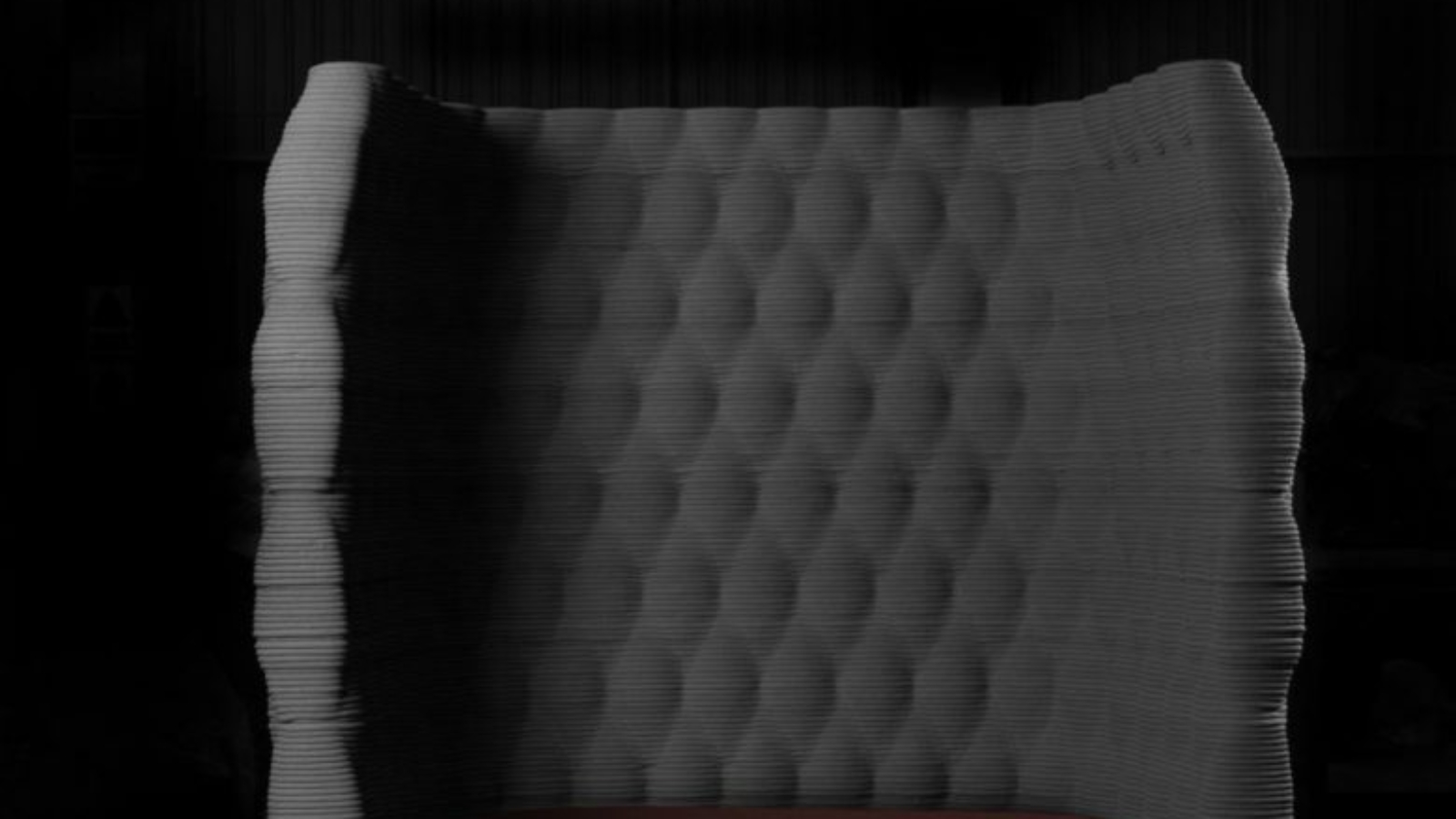Thai artist and designer Anon Pairot has designed an outdoor terrace consisting of 3D printed concrete furniture and decorations. Thailand’s Siam Cement Group provided its 3D printable SCG cement formula for the project.
If concrete (or leather) furniture is your thing, then Anon Pairot’s “Fluctuation of Precision” project could be right up your alley. The Thai designer has 3D printed a number of concrete garden features, including a sofa and tables, that are designed to recall memories of when “leather furniture [was] in fashion.”
The twist, however, is that these leather-style concrete pieces can be placed outside rather than inside the home. The project/installation/collection is actually a combination of two distinct but related parts: the furniture, and a rock garden, which is also 3D printed in concrete. This rock garden, “shaped to resemble natural materials,” brings the “charm of nature” to the scene.

Manufacturing on Demand
But while rocks are common around the world, 3D printable concrete mixes are not. That’s why Pairot worked closely with Thailand’s Siam Cement Group, who provided the artist and designer with its SCG cement formula. Using this 3D printing mix, Pairot was able to design rock-like structures to his exact specifications.
“Rock is a familiar material used in landscape decoration for Thai people,” SCG says. “But what is special [in ‘Fluctuation of Precision’] is that the shape and size of the rock can be created without the use of natural rock.” The cement mix is purportedly able to absorb large amounts of pressure, which also makes it suitable for items in the collection like the sofa and enclosed seat. Importantly, the concrete also sets at a rate that allows layers to fully fuse together before they harden.

Just as important as SCG’s cement mix was the 3D printer used to extrude it. This was a bespoke, four-meter-tall 3D printer from Italian large-scale printing specialist WASP. WASP is perhaps best known for its 12-meter-tall BigDelta 3D printer. SCG says its 3D printable concrete “allows the shaping of the imaginary products, creating the uniqueness that could not be delivered by other construction technologies.”
The company is right of course, and it’s particularly heartening to see a construction company getting so involved with an artistic project. It just shows that a crossover discipline like 3D printing can really bring together those from opposite ends of the working spectrum.
“Fluctuation of Precision” took four months to complete, from design to 3D printing.
You might also like:
3D printing Spain’s 12th c. San Pedro de las Dueñas Arch: While the industrial advantages of additive manufacturing are becoming increasingly clear, new applications are also opening up for the technology beyond the aerospace, automotive and medical industries. In the art and archaeological spheres, for instance, 3D printing and digital technologies are playing an important role in the preservation and restoration of cultural artifacts.
* This article is reprinted from 3D Printing Media Network. If you are involved in infringement, please contact us to delete it.
Author: 3D Printing Media Network


Leave A Comment